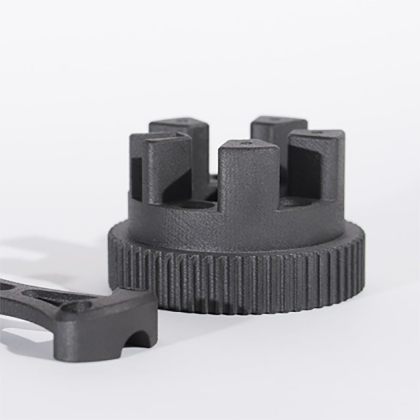Enhanced Design Flexibility
Why don't we learn about mjf 3d printing service.One of the most significant ways that MJF 3D printing is transforming manufacturing processes in [Industry] is through its ability to offer enhanced design flexibility. Traditional manufacturing methods often come with limitations in terms of design complexity and customization. However, with MJF 3D printing, manufacturers can create intricate and highly customized designs that were previously impossible to achieve. This level of design flexibility allows for the production of more efficient and innovative products in [Industry], ultimately leading to a competitive edge in the market.

Reduced Lead Times
Another key advantage of MJF 3D printing in [Industry] is the significant reduction in lead times. Traditional manufacturing processes can be time-consuming, involving multiple steps such as tooling, molding, and assembly. In contrast, MJF 3D printing enables rapid prototyping and production, eliminating the need for tooling and reducing the overall production time. This accelerated manufacturing process allows companies in [Industry] to bring new products to market faster, adapt to changing consumer demands, and stay ahead of the competition.
Cost-Effective Production
MJF 3D printing is also revolutionizing manufacturing processes in [Industry] by offering cost-effective production solutions. Traditional manufacturing methods often involve high setup costs, especially for small production runs or complex designs. With MJF 3D printing, manufacturers can significantly reduce tooling and labor costs, as well as minimize material waste. This cost efficiency makes it more feasible for companies in [Industry] to explore new product ideas, conduct small-scale production, and iterate designs without incurring substantial expenses.
Improved Product Performance
Furthermore, MJF 3D printing is driving advancements in product performance within [Industry]. The technology allows for the production of lightweight yet durable components, intricate geometries, and optimized structures that enhance the overall performance of products. Whether it's in aerospace, automotive, healthcare, or any other sector, MJF 3D printing enables manufacturers to create parts and products with superior mechanical properties, thermal resistance, and chemical resilience. This level of product performance can lead to improved functionality, reliability, and customer satisfaction in [Industry].
Sustainable Manufacturing Practices
Lastly, MJF 3D printing is promoting sustainable manufacturing practices in [Industry]. The additive nature of 3D printing minimizes material waste, as it only uses the exact amount of material required for production. Additionally, the ability to consolidate multiple components into a single 3D-printed part reduces the need for assembly, further reducing waste and energy consumption. By embracing MJF 3D printing, companies in [Industry] can contribute to environmental conservation efforts, reduce their carbon footprint, and align with the growing demand for sustainable products and processes.



